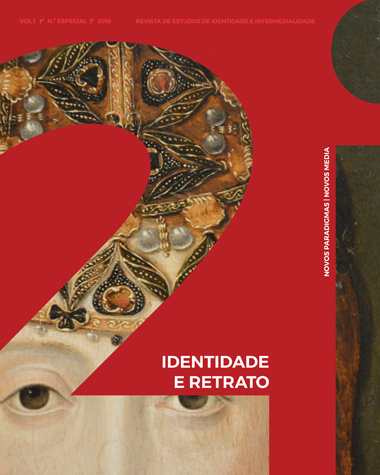Witnessing the History of a Massacre as Literary Theme and Strategy in the Graphic Novel 'Peterloo: Witnesses to a Massacre' (2019)
DOI:
https://doi.org/10.21814/2i.2208Keywords:
historical graphic novel; visual culture; textualization of the past; comics; Peterloo Massacre.Abstract
This article analyses how the use of history, as an ideological and textual narrative, becomes a literary theme and strategy in the realist graphic novel Peterloo: Witnesses to a Massacre, published collectively in 2019 by the historian Robert Poole, author of the recent study Peterloo: The English Uprising (Oxford University Press), also based in 400 contemporary written testimonies, and by the artists Eva Schlunke and Polyp. We also study how the novel mainly consists of images fictionalized from historical sources and quotations of those same historic narratives which allow the reader to create the illusion of direct contact with the textualized past through the illustrations that also function as autonomous and alternative narratives.
Downloads
References
Baetens, J. (2002). Revealing traces. A new theory of graphic enunciation. In R. Varnum & C. T. Gibbons (eds), The language of Comics: Word and image (pp.145–155). Mississippi: Univeristy Press of Mississipi.
Baetens, J. & Frey, H. (2015). The Graphic Novel: An introduction. Cambridge: Cambridge University Press.
Baetens, J., Frey H. & Tabachnick, S. E. (2018). Introduction. In J. Baetens, H. Frey, & S. E. Tabachnick (eds), The Cambridge history of the Graphic Novel (pp.1–18). Cambridge: Cambridge University Press.
Bennett, J. (2005). Empathic vision: Affect, trauma, and contemporary art. Stanford: Stanford University Press.
Blocker, J. (2009). Seeing witness: Visuality and the ethics of testimony. Minneapolis: University of Minnesota Press.
Boltanski, L. (1999). Distance suffering: Morality, media and politics. Cambridge: Cambridge University Press.
Christiansen, H.-C. (2000). Comics and Films: A narrative perspective. In A. Magnussen & H.-Ch. Christiansen (eds), Comics and culture (pp.107–121). Copenhaga: Museum Tusculanum Press.
Clüver, C. (1997). Estudos Interartes: Conceitos, termos, objetivos. Literatura e sociedade, 2, 37–55.
Chute, H. (2017). Why Comics? From underground to everywhere. Nova Iorque: Harper Collins.
Cutter, M. J. & Schlund-Vials, C. J. (2018). Redrawing the historical past: History, memory, and multiethnic Graphic Novels. Athens: University of Georgia Press.
Davies, P. F. (2019). Comics as communication: A functional approach. Londres: Palgrave.
Demson, M. e Hwitt, R. (Eds.) (2019). Commemorating Peterloo: Violence, resilience and claimmaking during the Romantic Era. Edinburgo: Edinburgh University Press.
Earle, H. E. H. (2019). Comics, trauma, and the new Art of War. Jackson: University Press of Mississippi.
Eisner, W. (2008). Comics and Sequential Art. Nova Iorque: WW Norton.
Eisner, W. (2008). Graphic storytelling and visual narrative. Nova Iorque: W. W. Norton.
Fawaz, R. (2016). The new mutants: Superheroes and the radical imagination of american Comics. Nova Iorque: New York University Press.
Fresnault-Deruelle, P. (1976). Du Linéaire au tabulaire. Communications 24: La Bande Dessinée et son Discours, 7–23.
Fresnault-Deruelle, P. (2008). Images à mis-mots: Bandes Dessinées, Dessins d’humour. Impressions Nouvelles: Bruxelas.
Frey, H. (2017). Historical Fiction. In S. E. Tabachnick (ed), The Cambridge companion to the Graphic Novel (pp. 80–96). Cambridge: Cambridge University Press.
Gaudreault, A. & Marion, P. (2004). Transécriture and narrative mediatics: The stakes of Intermediality. In R. Stam & A. Raengo (eds), A companion to Literature and Film (pp.58–70). Oxford: Blackwell.
Gell, A. (1998). Art and agency: An anthropological theory. Oxford: Oxford University Press.
Gil, J. (2004). Portugal, hoje: O medo de existir. Lisboa: Relógio d’Água.
Gordon, I., Jancovich, M. & McAllister, M. P. (Eds). (2007). Introduction: Film and Comic Books. Jackson: University Press of Mississippi.
Groensteen, T. (2007). The system of Comics. Jackson: The University Press of Mississippi.
Hargreaves, R. & Hampson, A. (2018). Beyond Peterloo: Elijah Dixon and Manchester’s forgotten reformers. Filadélfia: Pen & Sword History.
Hatfield, C. (2005). Alternative Comics: An emerging literature. Jackson: University Press of Mississippi.
Hatfield, C. (2009). The art of tensions. In J. Heer e K. Worcester (eds), A Comics studies reader (pp.132–148). Jackson: University Press of Mississippi.
Heer, J. & Worcester, K. (2009). A Comic studies reader. Jackson: The University Press of Mississippi.
Iadonisi, R. (Ed) (2012). Graphic history: Essays on Graphic Novels and/as History: Newcastle upon Tyne: Cambridge Scholars Publishing.
Jakobson, R. (1971). Selected writings: Word and language 2. Haia: Mounton. Krauss, R. (1999). “A voyage on the North Sea”: Art in the age of the post-medium condition. Londres: Thames and Hudson.
Krauss, R. (2010). Perpetual inventory. Cambridge: MIT Press.
LaCapra, D. (2014). Writing History, Writing trauma. Baltimore: John Hopkins University Press.
Marion, P. (1991). Traces en cases. Lovaina: Universidade Católica de Lovaina.
McCloud, S. (2006). Making Comics: Storytelling secrets of Comics, Manga and Graphic Novels. Nova Iorque: Harper Perennial.
Morgan, A. (2019). Ballads and songs of Peterloo. Manchester: Manchester University Press.
Moura, P. D. V. (2008). Memória da Banda Desenhada: Presença e leituras da memória em sete casos da Banda Desenhada contemporânea francófona. Dissertação de Mestrado, Universidade Nova de Lisboa, Lisboa.
Moura, P. D. V. (2017). Small panels for lower ranges: An interdisciplinary approach to contemporary Portuguese Comics and trauma. Tese de Doutoramento, Faculdade de Letras da Universidade de Lisboa, Lisboa.
Polak, K. (2017). Ethics in the gutter: Empathy and historical fiction in Comics. Columbus: Ohio State University Press.
Poole, R. (2019). Peterloo massacre: The English uprising. Oxford: Oxford University Press.
Phythian, G. (2018). Peterloo: Voices, sabres and silence. Stroud: The History Press.
Refaie, E. (2003). Understanding visual metaphor: The example of newspaper cartoons. Visual Communication, 2, 75–95.
Rajewsky, I. O. (2005). Intermediality, intertextuality, and remediation: A literary perspective on Intermediality. Intermédialités: Histoire et théorie des Arts, des Lettres et des Techniques/Intermedialities: History and theory of the Arts, Literature and Techniques, 6, 43–64.
Read, D. (1958). Peterloo: The ‘Massacre’ and its background. Manchester: Manchester University Press.
Reid, E. (2018). The Peterloo Massacre. Londres: Windmill Books.
Riding, J. (2018). The story of the Manchester Massacre of Peterloo. Londres: Head of Zeus.
Schwarz, G. (2010). Graphic Novels: New sites of possibility in the secondary curriculum. In B. S. S. & D. J. Flinders (eds), Curriculum and Teaching Dialogue 12:1–2 (pp.53–66). Charlotte: Information Age Publishing.
Tabachnick, S. E. (2017). Introduction. In S. E. Tabachnick (ed), The Cambridge Companion to the Graphic Novel (pp.1–7). Cambridge: Cambridge University Press.
Weiner, S. (2012). Faster than a speeding bullet: The rise of the Graphic Novel. Nova Iorque: NBM.
Williams, P. (2020). Dreaming the Graphic Novel: The novelization of Comics. New Brunswick: Rutgers University Press.
Witek, J. (1989). Comic Books as History. Jackson: University Press of Mississippi.
Zink, R. (1999). Literatura gráfica? Banda Desenhada portuguesa contemporânea. Oeiras: Celta Editora.


.jpg)










